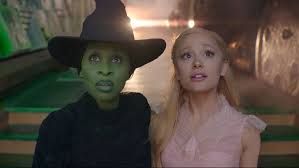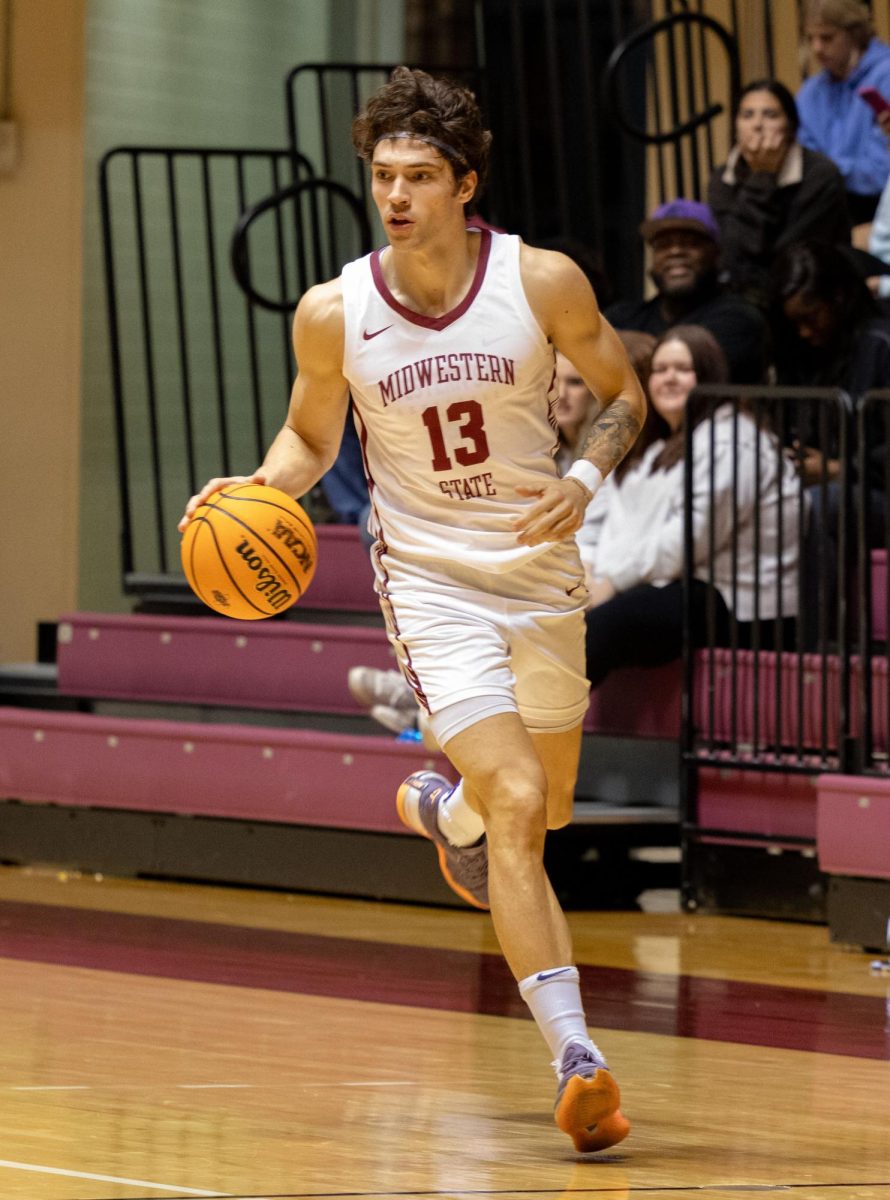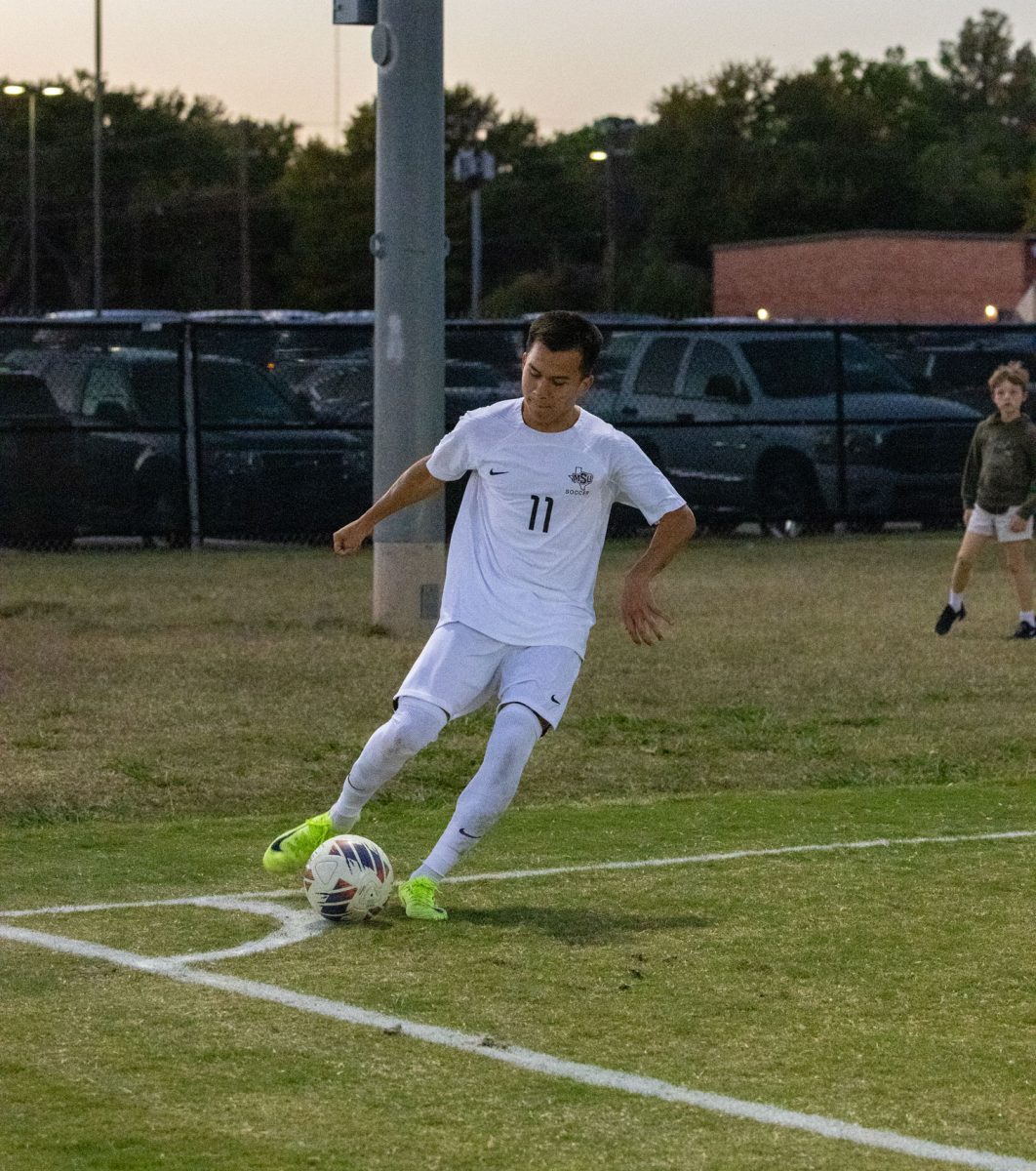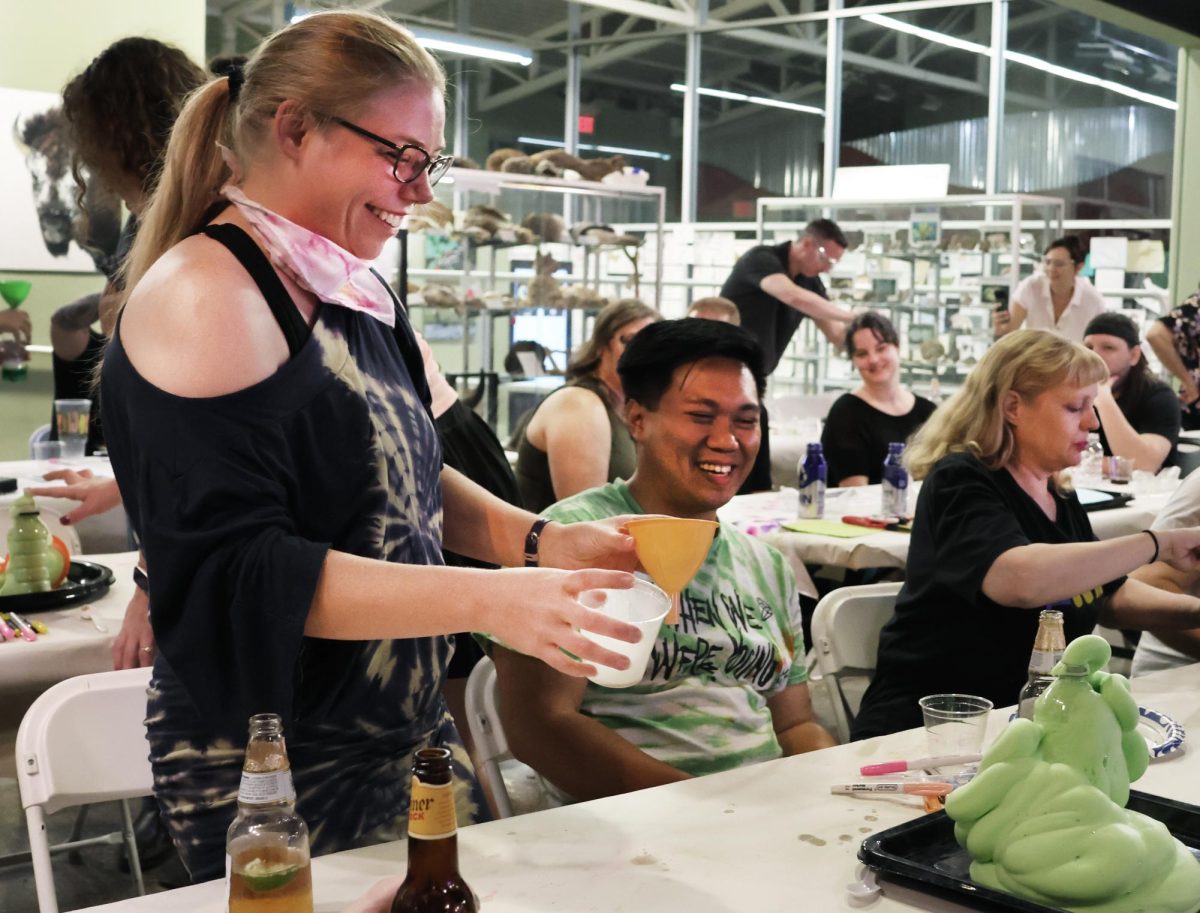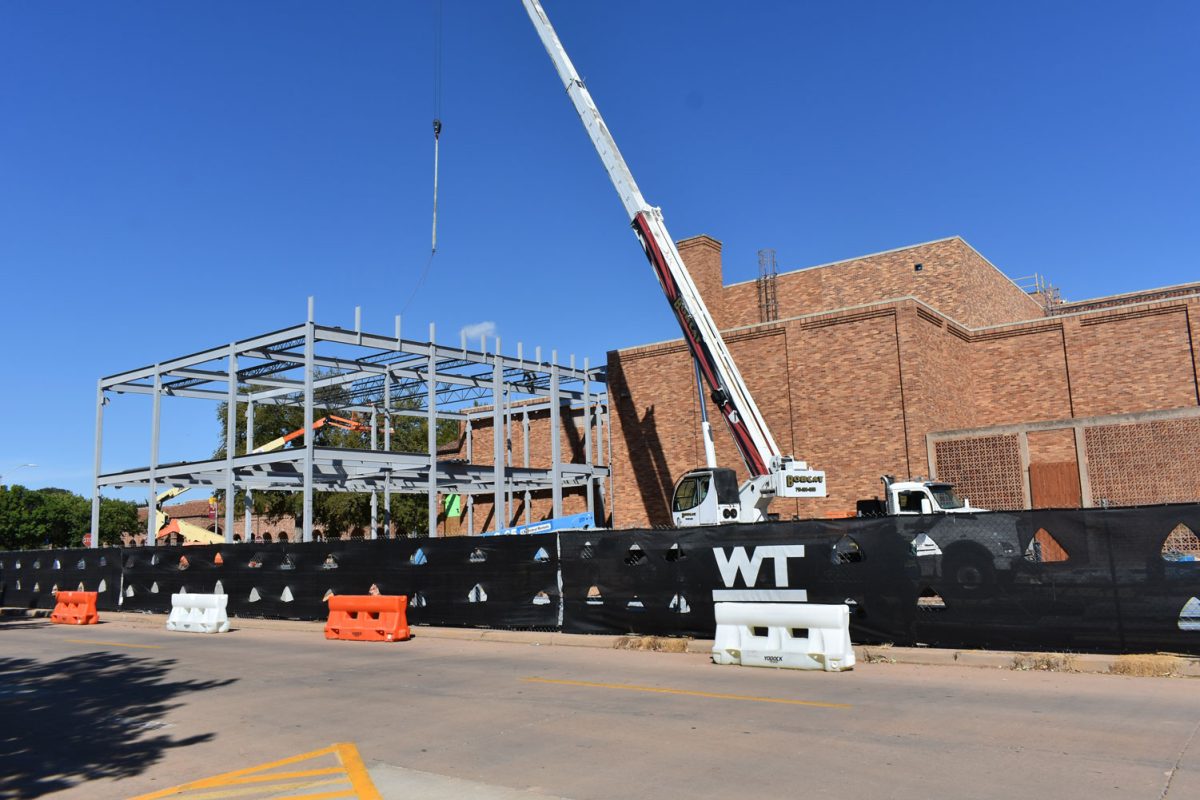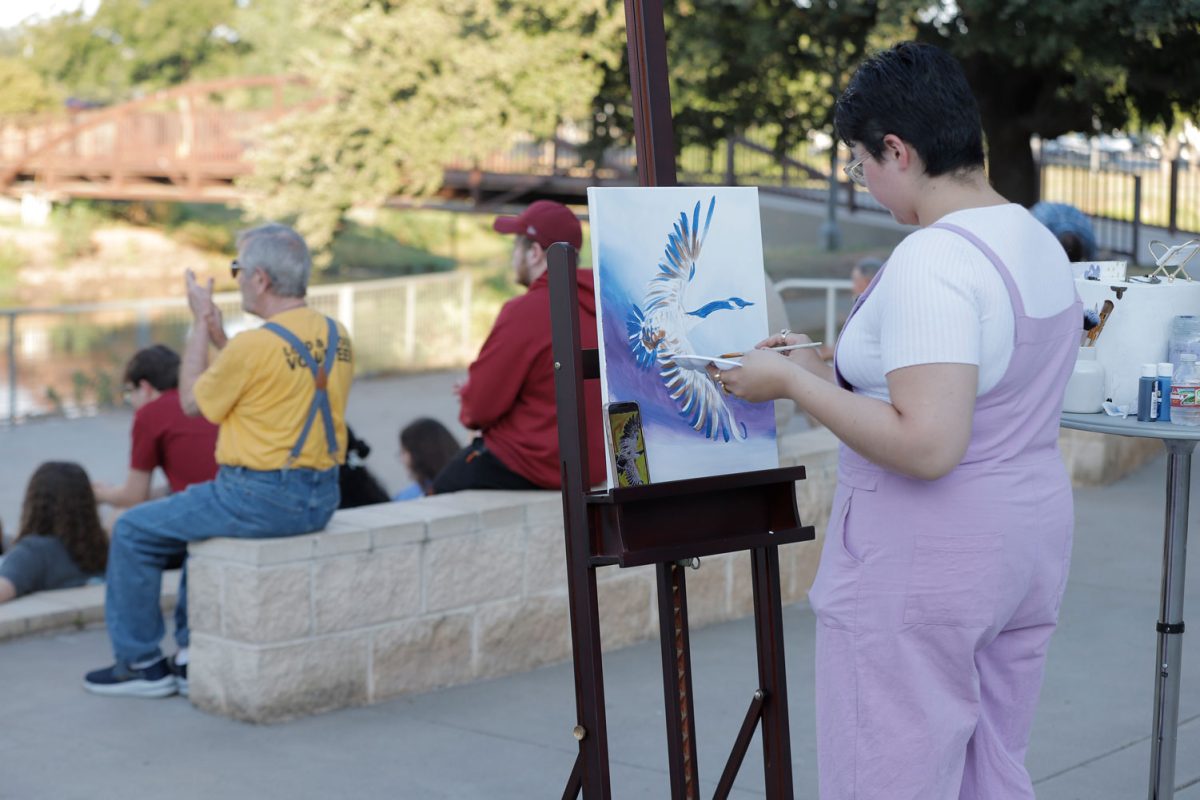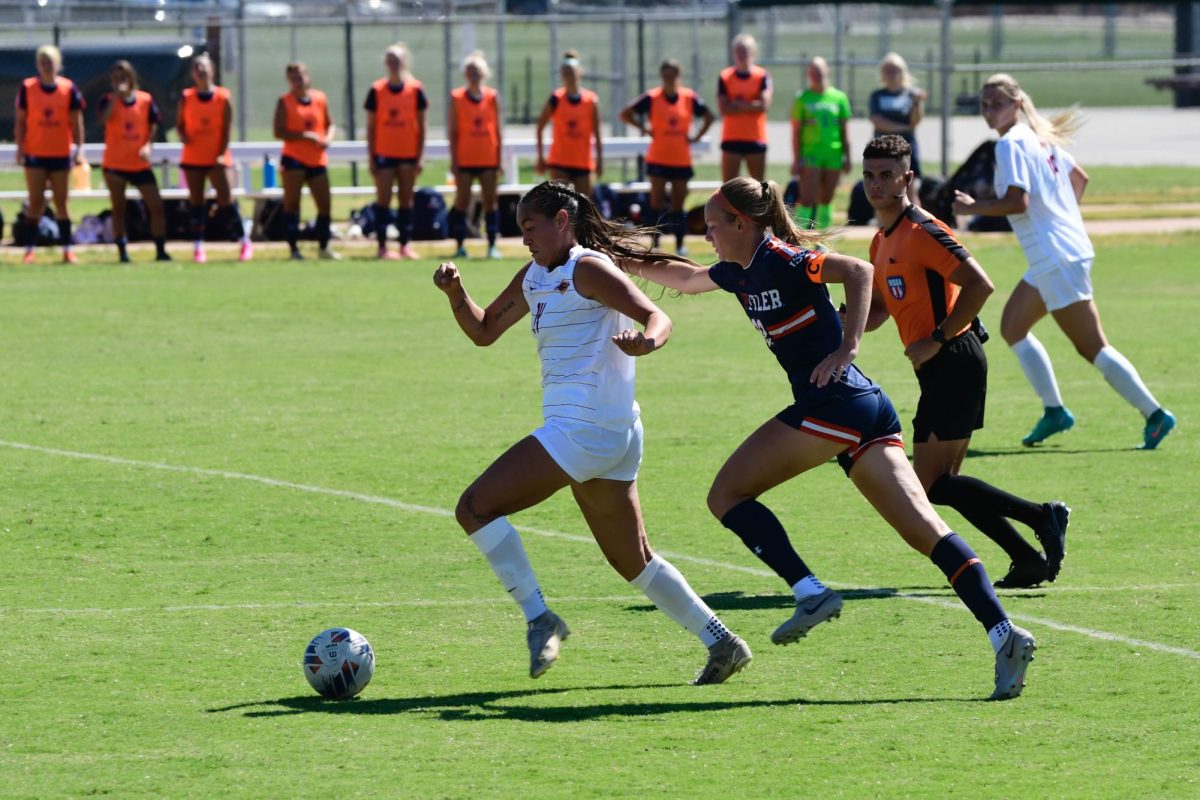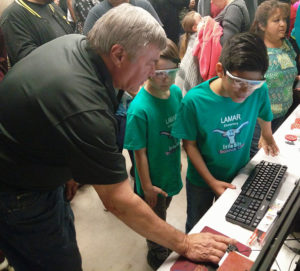
The Wichita Falls Independent School District and MSU came together on Jan. 26 for the MacGyver Fair at the Wichita Falls Museum of Art to promote the school district’s integration of Science Technology Engineering Art and Technology program, or STEAM. More than 300 people showed up to witness the creativity of the WFISD children and MSU’s more major sciences.
“I received an email from one of my colleagues and she said that the school district wanted to partner with MSU to conduct this ‘MacGyver Fair.’ As a former STEM project director I was like ‘I would love to help,’” Denise Simmons, assistant professor of educational leadership and technology, said. “We [MSU] have 3-D printing, the 3-D pens, Raspberry Pie programming, forensic science, aeronautics, mechanical engineering, electrical engineering, the STEAM kits as well as the chemistry demonstrations and interactions.”
WFISD originally asked for only one group of students to have their own science table and judge the WFISD students’ projects. The number of tables for MSU quickly increased to eight when students from multiple colleges including West College of Education, Lamar D. Fain College of Fine Arts, McCoy School of Engineering, and Bolin College of Science and Mathematics who wanted to take part in the fair. Some of the presentations brought from MSU included gyroscope robot kits, a 3-D printer and a paper airplane distance challenge to show the WFISD children different scientific applications.
STEAM is a program that is known for encouraging the curiosity and perseverance of young minds. Its history isn’t set in stone. Science Technology Engineering and Mathematics, or STEM, can be traced back to the colonial era when Benjamin Franklin expressed the importance of integrating mathematic and scientific disciplines in his book Proposals Relating to the Education of Youth in Pensilvania in 1749. Fast forward 261 years to 2010 when the Obama Administration saw the importance of the STEM program as well, and began investing in a five-year strategic plan for STEM education. The plan encouraged the involvement of underrepresented groups, such as woman and first-generation Americans, in the STEM disciplines, as well as pushing for more educators to teach using the STEM program. STEM was rebranded as STEAM when the organization when the Rhode Island School of Design made the decision to implement art and design into the program. Art and design became the “A” in STEAM, as it was becoming more prevalent that the two skills were equally as important as the rest of STEM. WFISD adopted STEAM to help students explore the concepts of multiple scientific disciplines, and help the students develop skills for the future with many employers looking to hire individuals with technologic and scientific knowhow.
“We’re researching how to implement a STEAM unit into our teacher education program,” Tamra Woods, history junior and aeronautics booth attendant, said. “The STEAM unit is basically like a project that brings all of the content areas of STEAM into one project. So basically it’s got a science concept, a technology concept, math, art, engineering concepts. You bring it altogether and you kind of help them [WFISD students] understand that all these things are kind of connected.”
Students also took part in the fair to show WFISD kids in the STEAM program how STEAM sciences apply to the real world.
“I’m part of an on campus organization called ASME [American Society of Mechanical Engineering], a national organization, and this was one of the volunteer opportunities that we had throughout the year,” Josh Gillis, mechanical engineering senior, said. “I’m hoping to intrigu [and] get more excitement about the sciences, about all the STEAM parts.”
Six of WFISD’s elementary schools took part in the MacGyver Fair. Crockett, Lamar, Washington, Southern Hills, Burgees and Milam Elementary had several of their students showcase their science projects.
“It [MacGyver Fair] is very exciting because the kids are exited about it and at least our school came up with what they wanted to do, we did not tell them this is what you have to do. They used things we had taught them in class, but then some of them also came up with their own ideas.” Brenda Hebner, Southern Hills Elementary teacher, said.
Alex Alejandro, Jr., Southern Hills Elementary third grader, showed off his terra-cotta clay volcano to the judges as it spewed red vinegar into the air.
“I always wanted to be in a science fair and now I kinda am. My first plan [for the volcano] was Skittles and Sprite. That does work the same way because I saw it in second grade at the lunch table [because] my friend was putting Skittles in his Sprite can,” Alejandro said. “I wanna be a herpetologist when I grow up, slash movie producer because I also like doing that.”
Other students showcased their autonomous drawing robots, “Santa Claus snot,” individual coding skills with autonomous robots, and their ability to turn tinfoil and electricity into digital instruments. Many of the students were using STEAM kits provided by WFISD.
“The district paid for these kids, they’re called ‘Little Bit Kids,’ they’re STEAM kids, to start getting the kids involved in science and building things and having fun with STEAM,” Peter Griffiths, associate superintendent of WFISD, said. “We said ‘Hey, why not MSU?’ We have MSU kids here and that way our kids can see ‘Alright this is the little stuff that happens, but let’s look at the big picture now and some of the major things going on.”
This is WFISD’s first time integrating the STEAM units into their schools; allowing students to take part in clubs that will prepare them for more technical and advanced courses throughout middle and high school, and that will hopefully lead them into a successful adult career in the scientific disciplines.
“This [STEAM] will be a great mechanism that these kids can use to propel their future, because education is something no one can take away from you,” Simmons said. “Education is a great equalizer, it levels the playing field and the opportunity these kids are getting is amazing.”
Milam took home first place, and Crockett took second. WFISD plans to have another fair showcasing the scientific works of students grades 6-12 in the coming spring, and another MacGyver Fair next year.






